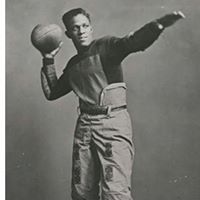Joseph Richard Howell
age ~46
from Bend, OR
- Also known as:
-
- Joseph R Howell
- Joseph Rhowell
Joseph Howell Phones & Addresses
- Bend, OR
- Clearfield, UT
- Hill AFB, UT
- Mountain Home AFB, ID
- Lake Oswego, OR
- Boise, ID
- Santa Maria, CA
- Lompoc, CA
Medicine Doctors

Joseph R. Howell
view sourceSpecialties:
Emergency Medicine, Urgent Care Medicine
Work:
Carilion Roanoke Memorial Hospital Emergency Medicine
1906 Belleview Ave SE, Roanoke, VA 24014
5409817337 (phone), 5409819550 (fax)
1906 Belleview Ave SE, Roanoke, VA 24014
5409817337 (phone), 5409819550 (fax)
Languages:
English
Description:
Mr. Howell works in Roanoke, VA and specializes in Emergency Medicine and Urgent Care Medicine. Mr. Howell is affiliated with Carilion Franklin Memorial Hospital and Carilion Roanoke Memorial Hospital.

Joseph Kerry Howell
view sourceSpecialties:
Internal Medicine
Gastroenterology
Gastroenterology
Education:
Louisiana State University at New Orleans (1967)
Isbn (Books And Publications)




Hard Living on Clay Street: Portraits of Blue Collar Families
view sourceAuthor
Joseph T. Howell
ISBN #
0385053177

Hard Living on Clay Street: Portraits of Blue Collar Families
view sourceAuthor
Joseph T. Howell
ISBN #
0881335266

Life Choices: A Hastings Center Introduction to Bioethics
view sourceAuthor
Joseph H. Howell
ISBN #
0878405771
Us Patents
-
Method And System For Generating And Utilizing Persistent Electronic Tick Marks
view source -
US Patent:8375291, Feb 12, 2013
-
Filed:Nov 6, 2009
-
Appl. No.:12/614217
-
Inventors:Joseph Howell - Portland OR, US
Jerome M. Behar - Los Altos CA, US
Anna Kwok - Union City CA, US -
Assignee:Web Filings, Inc. - Mountain View CA
-
International Classification:G06F 17/00
-
US Classification:715230
-
Abstract:Consistent with embodiments of the invention, computer-based systems and methods for annotating documents with a special type of graphical icon—referred to herein as a tick mark—are provided. Accordingly, utilizing a document annotation tool consistent with one embodiment of the invention, a user can quickly and easily place a tick mark next to an element of a document (e. g. , a word, sentence, paragraph, number, chart, graph or figure) being displayed to visually convey some information about that particular element of the document. A second user, who is viewing the same document subsequent to the first user placing the tick mark, will immediately recognize and appreciate the information conveyed by the placement of the tick mark.
-
Method And System For Generating And Utilizing Persistent Electronic Tick Marks
view source -
US Patent:20130139047, May 30, 2013
-
Filed:Jan 24, 2013
-
Appl. No.:13/748971
-
Inventors:Joseph Howell - Portland OR, US
Jerome M. Behar - Los Altos CA, US
Anna Kwok - Union City CA, US -
Assignee:Web Filings, LLC - Mountain View CA
-
International Classification:G06F 17/24
-
US Classification:715230
-
Abstract:Consistent with embodiments of the invention, computer-based systems and methods for annotating documents with a special type of graphical icon—referred to herein as a tick mark—are provided. Accordingly, utilizing a document annotation tool consistent with one embodiment of the invention, a user can quickly and easily place a tick mark next to an element of a document (e.g., a word, sentence, paragraph, number, chart, graph or figure) being displayed to visually convey some information about that particular element of the document. A second user, who is viewing the same document subsequent to the first user placing the tick mark, will immediately recognize and appreciate the information conveyed by the placement of the tick mark.
-
Occlusion Solution Within A Mixed Reality Design Software Application
view source -
US Patent:20230021117, Jan 19, 2023
-
Filed:Jan 5, 2021
-
Appl. No.:17/757354
-
Inventors:- Alberta, CA
Joseph S. Howell - Uintah UT, US -
International Classification:G06T 15/40
G06V 20/20
G06V 10/26
G06V 20/64
G06T 19/00
G06T 7/80
G06F 30/13 -
Abstract:A method for incorporating a real object at varying depths within a rendered three-dimensional architectural design space can include capturing data from a real environment, wherein the real environment comprises at least one real object within a physical architectural space. The method can also comprise extracting the at least one real object from the captured data from the real environment. Further, the method can include providing a rendered three-dimensional architectural design space comprising at least one virtual architectural component. The method can also include projecting the captured data from the real environment on a first plane within the rendered three-dimensional architectural design space and projecting the extracted at least one real object on a at least one additional plane within the rendered three-dimensional architectural design space, such that the rendered at least one real object is properly occluded within the rendered three-dimensional architectural design space.
-
Virtual Reality Immersion With An Architectural Design Software Application
view source -
US Patent:20210004509, Jan 7, 2021
-
Filed:Sep 21, 2020
-
Appl. No.:17/026723
-
Inventors:- Calgary, CA
Joseph S. Howell - Uintah UT, US
Robert Blodgett - Salt Lake City UT, US
Sheldon Smith - Calgary, CA
Tyler West - Calgary, CA -
International Classification:G06F 30/13
G06F 3/01
G02B 27/01
G06F 3/0346 -
Abstract:A virtual reality system can comprise a virtual reality headset, one or more position tracking sensors, and a computerized architectural design environment. The position tracking sensors can identify a relative location of the user with respect to a physical space. The computerized architectural design environment can comprise a computer-implemented method for displaying a three-dimensional view of an architectural design to a user through the one or more virtual reality components. The method can comprise receiving a communication from the one or more position tracking sensors, rendering at least a portion of an architectural design file, and transmitting to the virtual reality headset the rendered portion of the architectural design file.
-
Mixed-Reality And Cad Architectural Design Environment
view source -
US Patent:20200312039, Oct 1, 2020
-
Filed:Jun 16, 2020
-
Appl. No.:16/903212
-
Inventors:- Calgary, CA
Joseph Howell - Uintah UT, US
Robert Blodgett - Salt Lake City UT, US
Simon Francis Stannus - Millcreek UT, US
Matthew Hibberd - Sheffield, GB
Tyler West - Calgary, CA -
International Classification:G06T 19/00
G06F 3/0484
G06F 3/0481
G06F 30/00
G06F 30/13
G06T 7/60
G06T 19/20 -
Abstract:A computer system for creating architectural schematics within a mixed-reality environment generates, within an architectural design application, mixed-reality rendering data that visually describes one or more virtual architectural elements in relation to a real-world environment. The computer system transmits, to a mixed-reality device, the mixed-reality rendering data, wherein the mixed-reality device renders the mixed-reality rendering data within the real-world environment. The computer system also receives a command from a user directed towards a particular virtual architectural element. Additionally, the computer system constrains a scope of the command based upon an interaction between the virtual architectural element and the real-world environment.
-
Virtual Window
view source -
US Patent:20190230332, Jul 25, 2019
-
Filed:Aug 4, 2017
-
Appl. No.:16/318680
-
Inventors:- Rochester NY, US
Joseph Spencer Howell - Uintah UT, US -
Assignee:University of Rochester - Rochester NY
-
International Classification:H04N 13/117
H04N 13/366
H04N 13/305
H04N 13/204 -
Abstract:The present disclosure is generally related to capturing a scene and projecting a virtual window to one or more observers. A virtual window may mimic the experience a viewer has when looking through a real window. In some embodiments, for a single observer looking at a digital display or digital screen, a head-tracking camera on the same side of the screen as the observer can determine the position of the observer relative to the screen. The camera may be a 3D camera, stereoscopic camera, a wide angle lens camera, or an array of cameras (e.g., two or more). A camera on the other side of the screen can then image the view on the other side observer is relative to the window of the screen and software can determine the correct portion of the view that should be displayed on the screen to the observer.
-
Mixed-Reality And Cad Architectural Design Environment
view source -
US Patent:20180197340, Jul 12, 2018
-
Filed:Jun 9, 2017
-
Appl. No.:15/741487
-
Inventors:- Calgary, CA
Joseph Howell - Uintah UT, US
Robert Blodgett - Salt Lake City UT, US
Simon Francis Stannus - Millcreek UT, US
Matthew Hibberd - Sheffield, GB
Tyler West - Calgary, CA -
International Classification:G06T 19/00
G06T 7/60
G06T 19/20
G06F 17/50 -
Abstract:A computer system for creating architectural schematics within a mixed-reality environment generates, within an architectural design application, mixed-reality rendering data that visually describes one or more virtual architectural elements in relation to a real-world environment. The computer system transmits, to a mixed-reality device, the mixed-reality rendering data, wherein the mixed-reality device renders the mixed-reality rendering data within the real-world environment. The computer system also receives a command from a user directed towards a particular virtual architectural element. Additionally, the computer system constrains a scope of the command based upon an interaction between the virtual architectural element and the real-world environment.
-
Mixed-Reality Architectural Design Environment
view source -
US Patent:20180197341, Jul 12, 2018
-
Filed:Jun 9, 2017
-
Appl. No.:15/741488
-
Inventors:- Calgary, CA
Joseph Howell - Uintah UT, US
Robert Blodgett - Salt Lake City UT, US
Simon Francis Stannus - Millcreek UT, US
Matthew Hibberd - Sheffield, GB
Tyler West - Calgary, CA -
Assignee:Dirtt Environmental Solutions, Ltd. - Calgary
-
International Classification:G06T 19/00
G06T 15/10
G06T 15/04 -
Abstract:A computer system for managing multiple distinct perspectives within a mixed-reality design environment loads a three-dimensional architectural model into memory. The three-dimensional architectural model is associated with a virtual coordinate system. The three-dimensional architectural model comprises at least one virtual object that is associated with an independently executable software object that comprises independent variables and functions that are specific to a particular architectural element that is represented by the at least one virtual object. The computer system associates the virtual coordinate system with a physical coordinate system within a real-world environment. The computer system transmits to each device of multiple different devices rendering information. The rendering information comprises three-dimensional image data for rendering the three-dimensional architectural model and coordinate information that maps the virtual coordinate system to the physical coordinate system.
Name / Title
Company / Classification
Phones & Addresses
Director , Vice-President
Covenant Christian Academy
Principal
Webfilings LLC
Nonclassifiable Establishments
Nonclassifiable Establishments
11360 NW Rdg Rd, Portland, OR 97229
Director , First Vice-President
Greater Fort Worth Builders Association
MM
Truco International, Ltd
License Records
Joseph Clair Howell
License #:
507 - Expired
Issued Date:
Feb 20, 1943
Renew Date:
Dec 31, 1980
Expiration Date:
Dec 31, 1980
Type:
Professional Land Surveyor
Joseph Clair Howell
License #:
507 - Expired
Issued Date:
Feb 20, 1943
Renew Date:
Dec 31, 1980
Expiration Date:
Dec 31, 1980
Type:
Professional Engineer
Joseph D Howell
License #:
2705066175
Category:
Contractor
Joseph Howell
License #:
5350 - Expired
Category:
Asbestos
Issued Date:
Mar 27, 1998
Effective Date:
Jul 26, 2004
Expiration Date:
Mar 27, 1999
Type:
Asbestos Worker
Joseph R Howell
License #:
67522 - Expired
Category:
Health Care
Expiration Date:
Dec 1, 1994
Type:
Emergency Medical Technician
Lawyers & Attorneys
Googleplus

Joseph Howell
Work:
Habitat for Humanity Tucso (2011)
Education:
Luz Academy Of Tucson, Northern Arizona University, Pima Community College

Joseph Howell
Education:
University of the Pacific - Environmental Studies
Tagline:
I ride fast and stuff.

Joseph Howell
Lived:
Portland, Oregon
Work:
WebFilings - Managing Director

Joseph Howell
Education:
Page

Joseph Howell

Joseph Howell

Joseph Howell

Joseph Howell
Flickr
Youtube
Myspace

Joseph Howell
view sourcePlaxo

Gary Joseph Howell
view source
Joseph Howell Jr.
view source
Joseph C. Howell
view source
Joseph Howell Jr.
view source
Joseph Alan Howell
view source
Joseph C Howell
view source
Joseph Gregory Howell
view source
Joseph J. Howell Jr.
view source
Joseph Bandakoot Howell
view sourceClassmates

Joseph Howell
view sourceSchools:
Tall Oaks Elementary School Bowie MD 1975-1980, Heather Hills Elementary School Bowie MD 1977-1980, Thomas Pullen Junior High School Landover MD 1980-1983
Community:
Theresa Marshall, Kelvin Lee

Joseph Howell
view sourceSchools:
St. Christopher's High School Richmond VA 1964-1968
Community:
Andy Aldi

Joseph Howell
view sourceSchools:
Daniel Webster Elementary School 15 Scranton PA 1973-1977, Harriet Beecher Stowe School Scranton PA 1977-1979, South Scranton Junior High School Scranton PA 1979-1982
Community:
Annie Glucksnis, Heather Watkins

Joseph Andrew (Howell)
view sourceSchools:
Dolores County High School Dove Creek CO 1977-1981
Community:
Chuck Bartley, Edna Mclain

Joseph Howell
view sourceSchools:
North East High School North East MD 1974-1978
Community:
Barbara Mcnatt, Rhonda Gordon

Joseph Howell
view sourceSchools:
Lakeside Middle School Lakeside CA 1970-1972
Community:
Julio Aiza, Teresa Parsons, Christina Chrissy, David Raley

Joseph Howell
view sourceSchools:
St. Aloysius High School New Orleans LA 1956-1960
Community:
Larry Walton, John Aucoin, Brenda Capo, Anthony Deluca, William Kuhn

Joseph Howell
view sourceSchools:
Houston County High School Erin TN 1981-1985
Get Report for Joseph Richard Howell from Bend, OR, age ~46


















